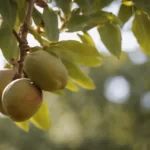Bougainvillea, renowned for its lush, vibrant bracts and sprawling growth, is a staple in many gardens and landscapes. While its stunning appearance is undisputed, there is a common concern among gardeners and pet owners alike: Is bougainvillea poisonous? This article aims to address this question, providing a comprehensive look at the potential risks associated with this popular plant.
Bougainvillea
Bougainvillea is a genus of thorny ornamental vines, bushes, and trees. Originating from South America, it has gained popularity across the globe for its colorful and long-lasting flowers, which are actually modified leaves called bracts. The plant typically features sharp thorns and green leaves, with the bracts coming in various colors like pink, purple, red, and orange.
Toxicity of Bougainvillea
When considering the toxicity of bougainvillea, it’s important to look at its effects on both humans and animals:
- Chemical Composition: Bougainvillea contains certain compounds that can be irritating, but it is not known to have potent toxins that cause serious harm. The primary concern usually stems from physical injury due to thorns or mild irritation caused by sap.
- Overall Toxicity: Generally, bougainvillea is not considered highly toxic. However, its thorns can pose physical hazards, and the sap may cause skin irritation or allergic reactions in some individuals.
Human Exposure to Bougainvillea
Skin Contact
The most common issue with bougainvillea in humans is skin contact, particularly with its thorns and sap:
- Thorns: The plant’s sharp thorns can cause puncture wounds. These injuries are usually minor but can become infected if not properly cleaned and cared for.
- Sap: Bougainvillea sap can cause skin irritation or a rash, particularly in sensitive individuals. It is advisable to wear gloves and protective clothing when handling the plant.
Ingestion
While cases are rare, ingestion of bougainvillea can cause mild upset stomach or nausea. It is generally not considered life-threatening, but seeking medical advice is recommended if ingestion occurs, especially in children.
Animal Exposure to Bougainvillea
When it comes to pets and wildlife, the concern with bougainvillea is similar to that in humans:
- Physical Harm from Thorns: Animals, especially curious pets, can suffer from scratches or puncture wounds if they come into contact with the plant’s thorns. Such injuries can be painful and may require veterinary attention if they become infected.
- Ingestion by Pets: Although bougainvillea is not known for being highly toxic, ingestion of its leaves or flowers can cause gastrointestinal upset in pets, such as vomiting or diarrhea. It is especially important to monitor young or small pets, as their bodies are less tolerant to even mild toxins.
- Symptoms to Watch For: If you suspect your pet has ingested bougainvillea, look for signs of distress like excessive drooling, pawing at the face (if sap has irritated their mouth), or changes in bowel movements. Contact a veterinarian if any concerning symptoms develop.
Safe Gardening Practices with Bougainvillea
To enjoy the beauty of bougainvillea without unnecessary risks, consider the following safety measures:
- Proper Plant Placement: Plant bougainvillea in areas less accessible to children and pets. Elevated planters or fenced areas can be effective.
- Protective Gear When Handling: Wear gloves, long sleeves, and eye protection when pruning or handling bougainvillea to avoid thorn injuries and sap irritation.
- Regular Pruning: Keep the plant well-pruned to minimize the risk of injury from thorns. Dispose of cuttings carefully to prevent accidental contact.
- Educate Family Members: Ensure that all family members, especially children, understand the potential risks of handling or ingesting parts of the bougainvillea plant.
Alternative Non-Toxic Plants
For those seeking safer alternatives to bougainvillea, especially in gardens frequented by children and pets, there are numerous non-toxic options that offer similar aesthetic appeal:
- Azaleas: Offering vibrant flowers, azaleas are a great alternative for adding color to your garden without the risk of thorns or irritating sap.
- Camellias: Known for their beautiful, rose-like blooms and glossy leaves, camellias are a safe and visually appealing choice.
- Ferns: For those looking for lush greenery without flowers, ferns are an excellent option. They are non-toxic and add a verdant feel to garden spaces.
- Impatiens: These plants provide bright blooms and are safe for gardens accessible to pets and children.
Each of these plants has its own care requirements and environmental needs, so it’s important to choose ones that will thrive in your specific garden conditions.
Conclusion
In summary, while bougainvillea is not highly toxic, it does pose certain risks due to its thorns and sap. The plant’s sharp thorns can cause physical injury, and its sap may irritate the skin or cause mild gastrointestinal upset if ingested. When incorporating bougainvillea into your garden, it’s crucial to implement safe gardening practices, such as wearing protective gear and educating family members about the plant’s potential hazards.
For those concerned about the risks associated with bougainvillea, there are many non-toxic alternatives that can beautify your garden space without posing a threat to children and pets. Choosing the right plants for your garden involves considering both their aesthetic value and their safety, ensuring a harmonious and enjoyable gardening experience.
Bougainvillea can still be a part of a safe and vibrant garden with the right precautions. By understanding the plant’s characteristics and taking appropriate safety measures, gardeners can enjoy the spectacular blooms of bougainvillea without undue concern.



